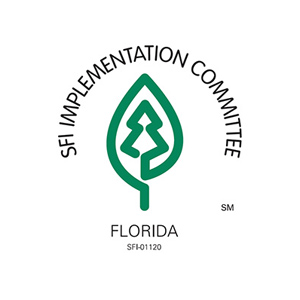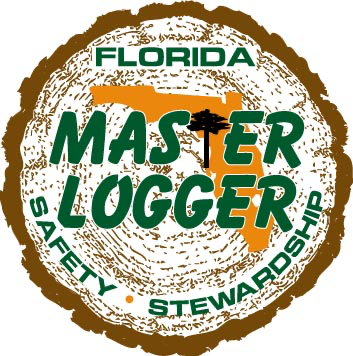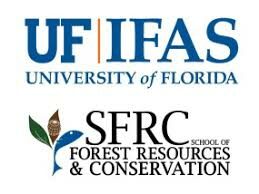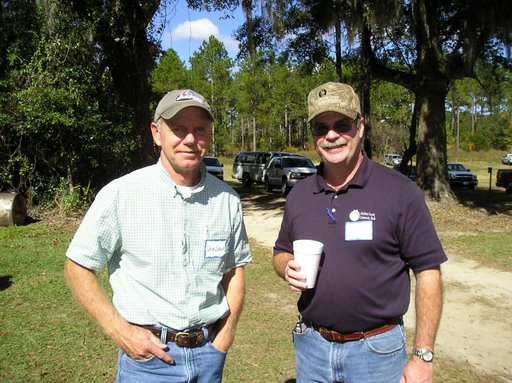Common responses when landowners discuss options for reforestation are, “I will never reap the benefits of the investment” or “I want to minimize costs because it will be so long before I can harvest.” Every situation is unique. Landowners must consider time frame, capital availability and allocation, current and future ownership arrangements, market dynamics, and other objectives that may or may not be financial. Did you know that there are opportunities for shortening the rotation age (date of final harvest) of a timber stand? How complicated can it be? Trees are planted and the owner waits for many years until the timber is suitable for harvesting. Sounds straight forward, however several factors are at play when planning and implementing a reforestation project. Let’s take a deeper dive into these considerations.
Species. While the site conditions such as soils, topography, and drainage certainly dictate the species chosen at establishment, landowner objectives also drive the ultimate decision on species selection. What is the real motivation for establishing a stand of timber? Is it strictly the performance of the investment? Are wildlife habitat concerns equally important? Is some other non-timber product like pine straw a factor in the investment strategy? Are aesthetics of the timber stand crucial to long-term success? These questions embody the landowner’s vision and goals for the site. Site conditions at times limit options for species selection. Nutrient deficient sites may require slower-growing species that survive in harsher conditions. Sites prone to periods of flooding require species that can best withstand inundation. For most reforestation projects, species selection is the first decision to be considered, and it facilitates the decision-making process for the other components covered below.
Site Preparation. Although a clear-cut area planned for reforestation may appear to be a clean slate, Mother Nature is never at rest and awaits new opportunities to utilize space and resources. Site preparation techniques must be tailored to address the species that will occupy this “clean slate” and ultimately compete with the newly planted trees. What are the primary species to control? Can they be controlled with an herbicide application? What mixture of herbicides will address the species of concern? Will mechanical site preparation be necessary to address certain species? Is burning before planting an option for the site? Does the site’s hydrology require physical amending to prevent flooding of seedlings? These are just a few of the considerations that must be evaluated months before a seedling is ever planted. Research indicates that appropriate site preparation will increase volume production and reduce a stand’s rotation age by several years. Insufficient site preparation often results in additional costs within ten years of establishment to prevent the complete loss of the investment. It is imperative to consider the minimum, necessary site preparation requirements for the establishment of a timber stand, but it is wise to consider what your budget may allow above and beyond the bare necessities.
Seedling Genetics. Genetic improvement in seedlings began in the middle of the twentieth century and has now reached a level that allows landowners and foresters many options for improving performance. Some of the tree characteristics favored when making selections are quite intuitive such as stem straightness and growth rate, but have you ever thought about breeding a tree so that the angle of the branches creates smaller knots upon natural pruning? Have you ever considered that selecting a top performer in growth that is prone to specific diseases in your geographic area may prevent your investment from ever maximizing its genetic potential? Genetics selections are generally available to match most considerations including budget, geographic location, and market opportunities. Proper selections can improve your investment’s performance by at least thirty to forty percent, but a proper investment in genetics may not mean the most expensive seedlings. In some geographic regions of the US Southeast timber markets are very limited, so choosing the most expensive seedlings that have “all the bells and whistles” is a waste of your budget that could be allocated to another component of the reforestation project. Working closely with your forestry consultant to determine the appropriate investment in genetically improved seedling stock will help ensure you are maximizing potential.
The old adage about “cutting corners” during the establishment of a stand of timber is not justifiable when we have the ability to influence so many components and ultimately reduce the amount of time to achieve financial return on the investment. By carefully evaluating species, site preparation, and the genetic quality of the seedling stock selected, the rotation age of a timber stand can be reduced substantially while additionally improving the stand quality. While these three components are most important, other options should be considered. For example, fertilization and post-establishment herbicide applications can increase growth and yield, shorten rotation length, and enhance return on investment in some instances.
While foresters often joke about gauging success during reforestation by observing, “green side up and roots in the ground” when referring to seedlings, this does little more than generate a laugh. Decisions during the establishment of a stand of timber should be carefully considered with the same due diligence that any investment would be given. These decisions should be made to maximize the effectiveness of the available budget, should be tailored specifically to landowner objectives, and should integrate the different components of the project discussed here to utilize the full potential of the site. Let’s change the narrative from, “I’ll never reap the benefits of the investment” to “how can I reduce the rotation age of my investment and generate returns as soon as possible.” Through an understanding of these dynamic systems, opportunities to improve performance are more available now than ever before.

 Loggers earn their Florida Master Logger certification by completing this workshop which includes modules on safety, business management, and environmental regulations. George Fullerton, WEA Senior Biologist, presented about logging considerations for imperiled species in Florida. His program discussed the history and status of environmental regulations in US and Florida, detailed descriptions of imperiled plant and animal species and critical habitats in Florida, best management practices and regulations for interacting with these species and their habitats, potential future listings and legal challenges, and the value of logger’s efforts towards biodiversity and conservation. This opportunity to address loggers is valuable because the SFI Principles call upon every program participant to meet market demands while complying with applicable laws and agreeing to use environmentally responsible practices that promote the protection of biodiversity, wildlife, plants, soil, water, and air quality. WEA has presented environmental modules during this Master Logger training workshop since 2016.
Loggers earn their Florida Master Logger certification by completing this workshop which includes modules on safety, business management, and environmental regulations. George Fullerton, WEA Senior Biologist, presented about logging considerations for imperiled species in Florida. His program discussed the history and status of environmental regulations in US and Florida, detailed descriptions of imperiled plant and animal species and critical habitats in Florida, best management practices and regulations for interacting with these species and their habitats, potential future listings and legal challenges, and the value of logger’s efforts towards biodiversity and conservation. This opportunity to address loggers is valuable because the SFI Principles call upon every program participant to meet market demands while complying with applicable laws and agreeing to use environmentally responsible practices that promote the protection of biodiversity, wildlife, plants, soil, water, and air quality. WEA has presented environmental modules during this Master Logger training workshop since 2016. The FFA administers the Master Logger program for the Florida SFI-SIC. The program is designed to enhance the professionalism of loggers through training in safety, timber harvesting, business, and environmental regulations. Following initial training, Master Loggers must complete Continued Logging Education (CLE) credits annually to maintain their certification.
The FFA administers the Master Logger program for the Florida SFI-SIC. The program is designed to enhance the professionalism of loggers through training in safety, timber harvesting, business, and environmental regulations. Following initial training, Master Loggers must complete Continued Logging Education (CLE) credits annually to maintain their certification.
 Southern Forestry Consultants (SFC) is excited to announce that Ashley Farms, owned by Don Ashley and Theo Meadows, has been recognized as the 2020 Jon Gould Florida Outstanding Tree Farmer of the Year. This award is presented annually by the Florida Tree Farm Program, a non-profit organization, and the state affiliate of the American Tree Farm System (ATFS). Our SFC team in Monticello, Florida assists Ashley Farms with forest and wildlife management, a relationship maintained for over 25 years.
Southern Forestry Consultants (SFC) is excited to announce that Ashley Farms, owned by Don Ashley and Theo Meadows, has been recognized as the 2020 Jon Gould Florida Outstanding Tree Farmer of the Year. This award is presented annually by the Florida Tree Farm Program, a non-profit organization, and the state affiliate of the American Tree Farm System (ATFS). Our SFC team in Monticello, Florida assists Ashley Farms with forest and wildlife management, a relationship maintained for over 25 years.